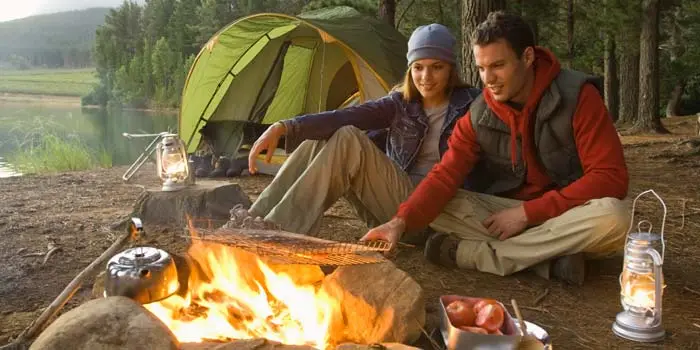5 Precautions to Keep Your Bonfire or Campfire Safe


Fall is here, and it’s the ideal time of year to build a warm, crackling campfire on a chilly night. If you love to gather around a backyard fire with family and friends, it’s important to understand the fire laws in your area, as well as campfire safety precautions. Prepare for your next campfire with these five things you should know to keep your fire safe and ensure everyone has an enjoyable night!
When it comes to building fires, people often use the terms bonfire and campfire loosely and think of them the same way. In reality, they are quite different.
The main difference is in size and purpose. A campfire is typically a small fire intended to be used for heating, cooking, to deter insects or to provide light for a campsite or picnic area. Campfires are small enough for people to sit around, giving off enough heat to keep you warm but comfortable.
On the other hand, a bonfire is much bigger. The purpose of a bonfire is typically for a celebration, a large outdoor event or as a signaling device. A bonfire is a controlled fire, but its large size makes it more hazardous. Bonfires are built in open areas like fields or meadows and away from trees or brush. Bonfires are fueled by larger items like wooden pallets and large logs, while campfires are built with small tinder or coals.
No matter what type of campfire you build, safety should be top priority. Fires are often unpredictable, and all safety precautions should be taken.
If you’re building a campfire at a campground, there are usually designated fire rings or grills provided. Use them to keep the fire contained and away from trees, brush and tents.
If there is no fire ring provided, there are still steps you can take to contain the campfire.
Check with campground management to make sure fires are allowed. If you’re camping on an undeveloped site, check with the agency that administers the land, such as the U.S. Forest Service, as a campfire permit may be required.
You’ll need three basic materials to start your campfire: tinder, kindling and wood. Tinder is the smallest and easiest burning materials used to get a campfire started. Tinder is dry and fluffy, which can make it a challenge to find in wet weather. It’s best to bring some with you instead of counting on finding it out in the woods. Tinder can take on many forms, including:
Once the tinder has caught fire, it can help ignite larger materials. The larger materials are called kindling, which typically consists of twigs or small branches. When collecting kindling, only use wood that snaps and breaks. If it bends, it is too wet to burn. Always collect all of your fire-starting materials before setting a spark, as the fire will go out quickly if you need to gather more fuel.
Now that you have the materials and supplies you need, and you’ve chosen a safe campfire spot, it’s time to build your fire.
After you’ve spent an evening sitting around the campfire with family and friends, it’s time to put out the flames. Here are a few simple steps you can take to ensure your fire is completely extinguished:
If you’re thinking about building a campfire, always check the environment and weather forecast before getting started. If you hear of any of these conditions, it’s better not to start the fire.
If you’re having a backyard campfire, you’ll probably end up doing a little cooking. After all, the smoke and flames can add great flavor to your meal. Whether you’re planning a whole meal or just roasting marshmallows, here are some campfire safety tips for cooking!
Even if you can’t get away for a big camping trip, you can have your own mini camping trip in your backyard! First, always check that it is legal for you to have a fire outside your home. Laws vary by city and state.
Many homeowners use portable, metal fire pits or a built-in stone fire pit to build campfires in their backyard. Whether you’re building a fire pit or you have a portable one, make sure it is a safe distance from your home. Just like camping in the woods, embers can fly from a fire in your backyard and come in contact with your home or garage. If you’re planning a backyard fire, check with your insurance agent to find out if your homeowner’s insurance policy covers this situation. It’s possible that your policy could extend, and it’s a good idea to find out.
By taking these precautions, you’re bound to have a relaxing night around the toasty campfire. If you’d like the peace of mind of knowing your home is protected from the unexpected, contact your Farm Bureau agent today.